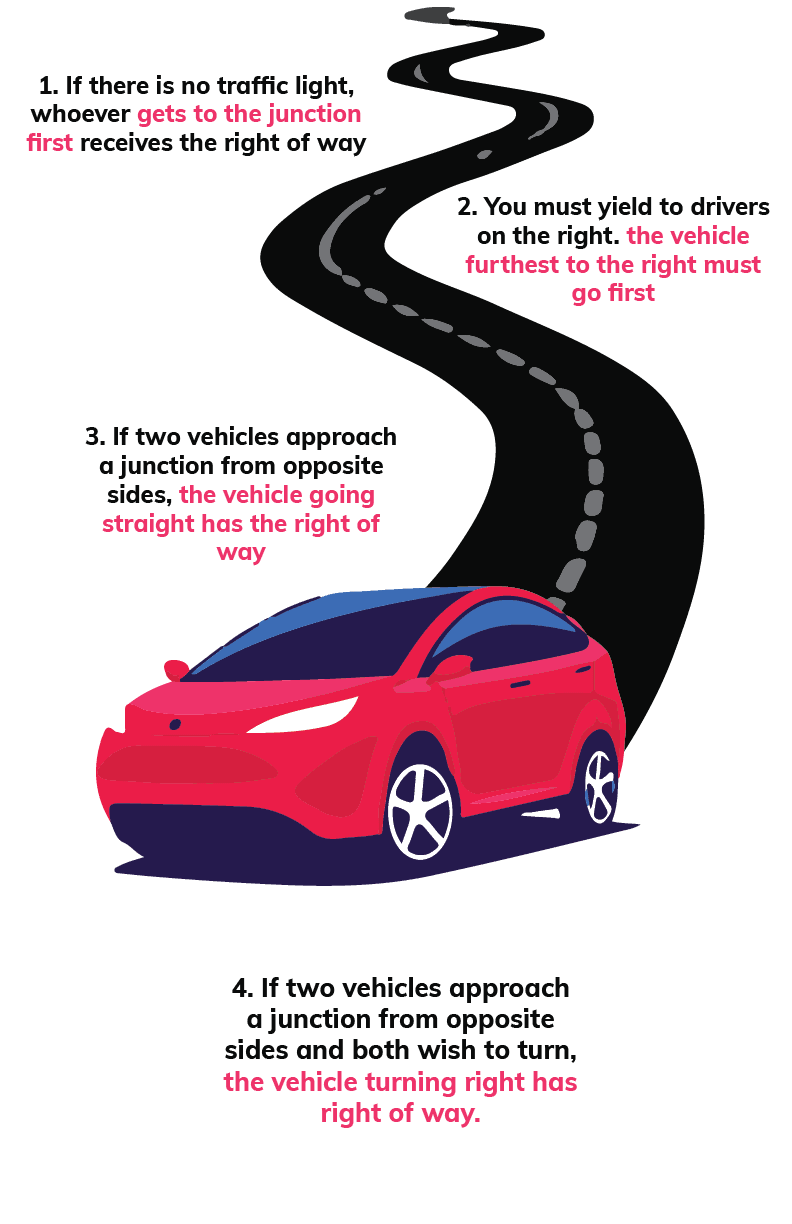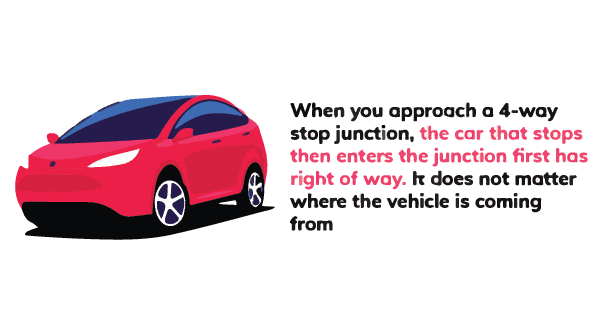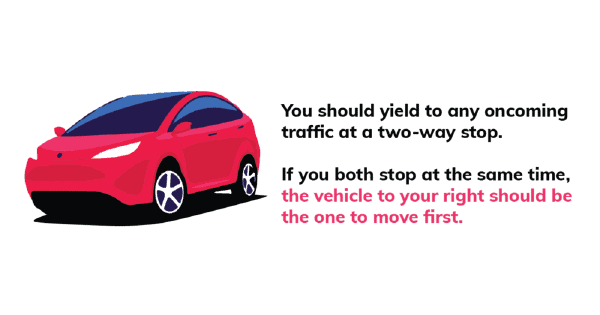In 2016, there were over ten thousand serious injuries due to traffic collisions in Canada alone. Statistics like this are terrifying and make you want to be as safe as possible on the road. One of the best ways to do that is to know what is going on around you and who has the right of way in any situation.
This article will explain how the right of way works in Ontario. This way you can understand how to travel as you drive around the city.
What Is Right of Way?
Right of way is a common concept in several countries. It refers to when multiple vehicles approach the same junction and must make a decision about who can pass it first. It denotes the two (or more) individuals as one who has the right of way and the others who must yield to other vehicles who may pass.
Having or yielding the right of way does not remove the liability of individuals involved. Mistakes made are still the responsibility of those who made them. So, everybody involved in the interaction between drivers should know all the rules involved.
What Is The Law?
No matter where you want to live, the law states that the following four things are true when dealing with the right of way when driving in Canada:
- If there is no traffic light, whoever gets to the junction first receives the right of way. This is only true if one person gets to the junction obviously first, and if there is any ambiguity you must follow the other rules. There is no specific number of meters this is relevant for and you should use common sense and courtesy to determine your actions.
- You must yield to drivers on the right. If more than two vehicles arrive at the same time, the vehicle furthest to the right must go first. This must continue with the leftmost vehicle being the last one to pass.
- If two vehicles approach a junction from opposite sides, the vehicle going straight has the right of way. This means that if one of the vehicles is planning to turn, they must yield to the other. If both vehicles are continuing straight on without turning, they may continue without incident.
- If two vehicles approach a junction from opposite sides and both wish to turn, the vehicle turning right has right of way. Situations such as this prove how important turning signals are.
Other Points of Note
You should also be aware that you cannot lose your right of way. If the individual with the right of way stalls their vehicle, you should continue to wait until they have passed. Their right of way is only lost if they clearly display an intent to not continue driving, such as if they park their vehicle and exit the vehicle.
You should also not block another's right of way. If there is not enough room for your vehicle to continue on past the junction, your vehicle should not enter it. This is to avoid causing issues for other drivers.
Right of Way at Uncontrolled Intersections
This is a junction where there are no road markings or signs. They rely on drivers' knowledge of the rules of the road to allow people interacting on these roads to do so safely. You commonly find uncontrolled sections in sparsely-populated areas or new roads.
In general, the rules of these junctions are similar to the above, to prevent incidents.
You should yield to the first person at the intersection. In addition, you should give way to traffic from the right if you both arrive at the same time.
If you are turning, you should yield to a person who is continuing straight ahead. If you are both turning towards the same direction, the individual who is turning right to get there should go first. After this, the person turning left can go.
Who Has the Right of Way at a 4-Way Stop?
The 4-way stop rules apply where there are four stop signs, similar rules to the above apply but are overseen by one more important rule:
When you approach a 4-way stop junction, the car that stops then enters the junction first has right of way. It does not matter where the vehicle is coming from, nor does it matter which direction they are traveling in.
If there are additional vehicles, then the same still applies. The vehicles that stop at the line of the intersection should be those which go first.
Sometimes there is no better way to tell who got to the junction first. In these situations, it is usually safest to assume people will follow the rules of uncontrolled intersections.
This means that the vehicles will enter the junction in clockwise order. Be aware, however, that this is not an official rule and not beholden by law.
If in doubt, yield to the other people even if you assume you would otherwise have right of way. This is the safest course of action.
Who Has the Right of Way at a 2-Way Stop?
The 2-way stop rules apply when there are two stop signs at a 4-way intersection.
You should yield to any oncoming traffic at a two-way stop. In addition, if you are making a left-hand turn you should lead to vehicles approaching you from ahead even if you got there first.
If instead, you both stop at the same time, the vehicle to your right should be the one to move first.
Left Turn Rules in Ontario
When turning left, you should begin in the left lane of the intersection. When ending the turn, you should still be in this lane. You should also only turn when it is safe to do so and you have right of way, so remember to check all directions before turning.
Right of Way at Lit Intersections
When turning left at a green light at a lit intersection, you must still be aware of those coming towards you. If vehicles are driving in a straight line towards your road, you must yield to them to avoid crossing their line of driving.
Right of Way Rules When Entering a Highway
There are different rules when merging onto a highway. If merging, you must always yield to vehicles already on the road. This traffic is already moving at speed, and its position should be respected as the merging lane never has right of way.
What Are the Dangers of Not Respecting Right of Way on the Highway?
If you do not respect the right of way on a highway, you will not be granting vehicles traveling up to and above 100kph the space to travel freely. This could lead to extremely dangerous or deadly accidents.
What Happens If I Don’t Give the Right of Way?
If you do not yield to vehicles that have the right of way, you could be in serious danger. Some of the punishments for acting in such a way include:
- Fines of over one hundred dollars
- Three demerit points on your license
- A mark on your insurance record for upwards of three years
There are also other repercussions, such as needing to pay extra for insurance in future years due to having had an accident.
Is It a Rule or a Law?
Right of way in Ontario is a law. You are unable to get around it by just suggesting that it is a rule of the road. The police will not give a lot of sympathy to people who flagrantly disregard it.
For more information about Canadian driving laws, you should seek out a driving guide. The group that oversees driving in your province will be able to provide these. They are available online, or at various stores.
If I Get a Ticket, Will It Impact My Insurance Rates?
This question depends entirely on your insurer. Some insurers will base your insurance rates on your history of whether or not you have had accidents in the past. Some, on the other hand, will take your entire driving history in much more detail.
What is more likely to have a significant impact is the number of demerit points on your license. These can have a significant effect on your insurance rate. Effects can be up to and include a refusal to your request for insurance for significant numbers of demerits.
Where Can I Find Out More?
You should now have a good idea as to how to both take and yield the right of way in your vehicle. For more information on this subject, you should check with your local authority.
Of course, this will not always be of assistance when the other person is the cause of an accident. For that reason, you always want to make sure you have the best insurance for your vehicle you can get.
For more information on how to investigate good insurance quotes, get in contact. We would be more than happy to assist you with your investigation.




